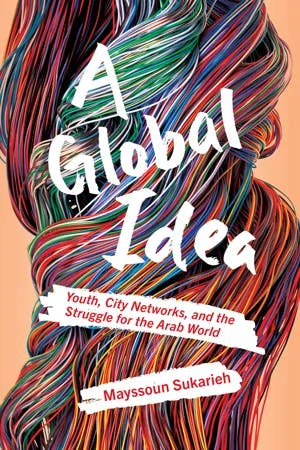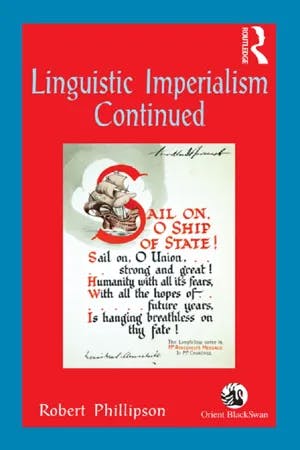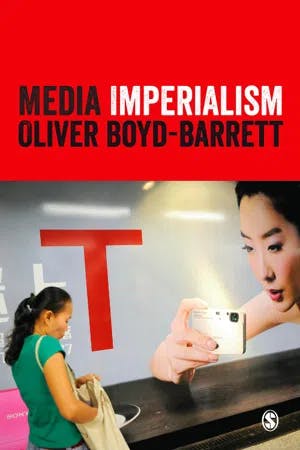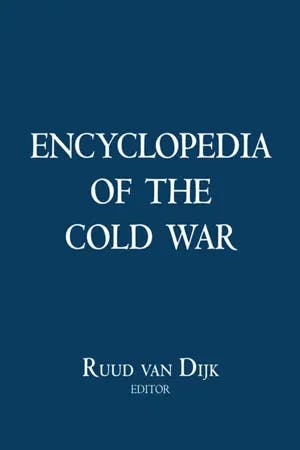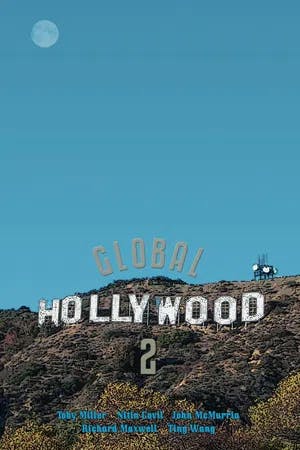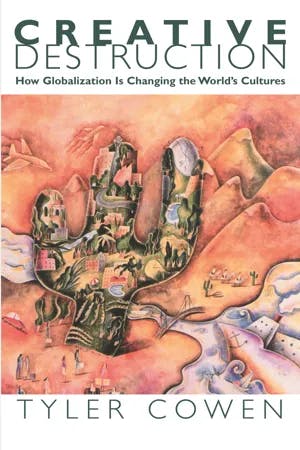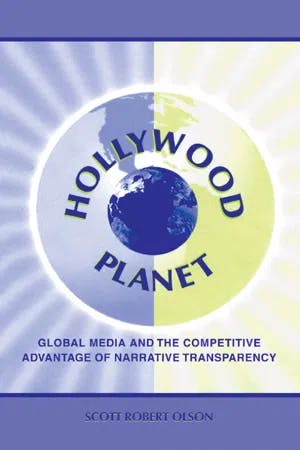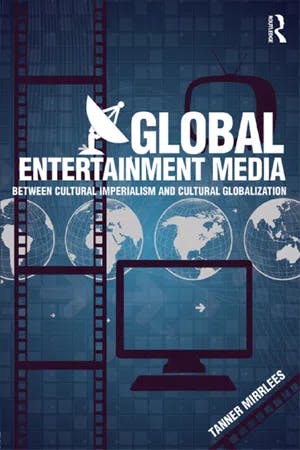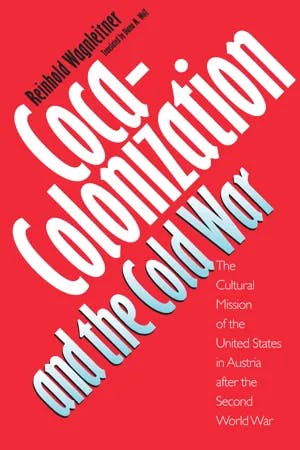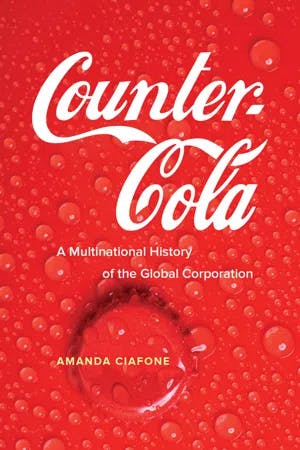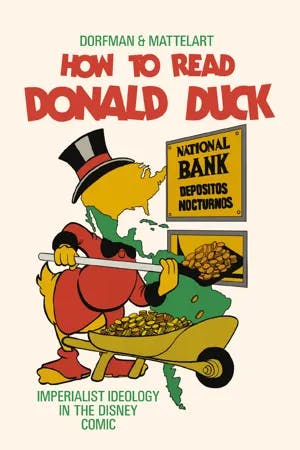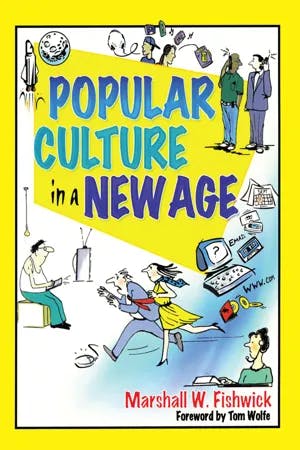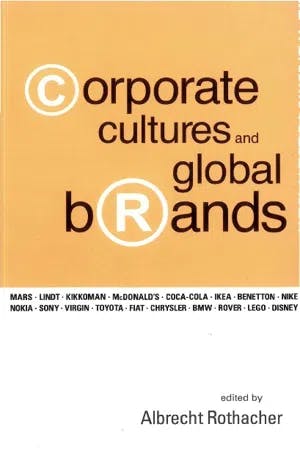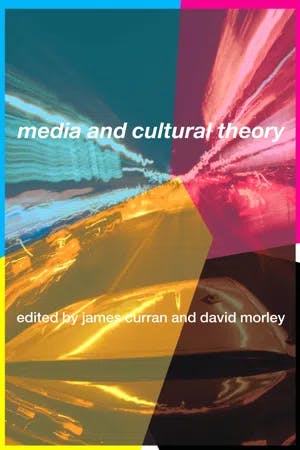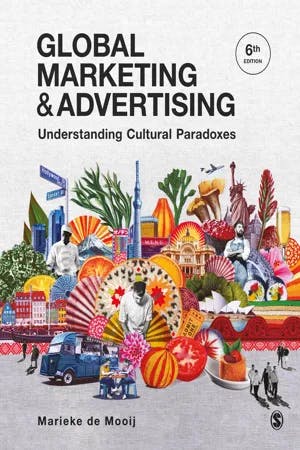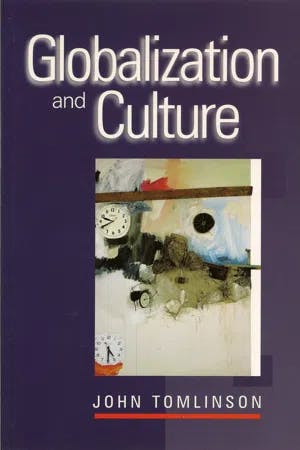What is Cultural Imperialism?
PhD, English Literature (Lancaster University)
Date Published: 20.12.2023,
Last Updated: 16.01.2024
Share this article
Definition and origins
Cultural imperialism describes the imposition of one culture’s values, ideas, and cultural products onto another culture, often representing a continued form of imperialism. While cultural imperialism can occur between any two nations with a power imbalance, it is most manifest in the West’s relationship with the developing world. The West’s cultural influence has enabled it to have power in other countries and cultures, specifically in historically colonized nations. A large proportion of the scholarship in this area focuses on cultural imperialism in the United States and the “Americanization” of other countries through Hollywood films, American media (such as sitcoms and reality television), and recognized global brands such as McDonald’s and Coca-Cola.
Cultural imperialism, as a theory, emerged in the 1960s and 70s. Herbert I. Schiller, an American media critic and sociologist, coined the term in his foundational text Communication and Cultural Domination:
The concept of cultural imperialism today best describes the sum of the processes by which a society is brought into the modern world system and how its dominating stratum is attracted, pressured, forced and sometimes bribed into shaping social institutions to correspond to, or even promote, the value and structures of the dominating centre of the system. (1976, [2019])
Herbert I. Schiller
The concept of cultural imperialism today best describes the sum of the processes by which a society is brought into the modern world system and how its dominating stratum is attracted, pressured, forced and sometimes bribed into shaping social institutions to correspond to, or even promote, the value and structures of the dominating centre of the system. (1976, [2019])
It is clear to see how Western ideas and trends have permeated the globe. It is evident, for example, in the prevalence of the English language globally, and the Westernization of many countries through the spread of fashion trends, beauty standards, and brand-name cultural products.
In A Global Idea (2023), Mayssoun Sukarieh outlines three critical ideas that are central to cultural imperialism analysis.
- There is a recognition that the dissemination of dominant ideology around the globe “is not random or accidental.” The spread of these ideas is also not necessarily based on the “inherent superiority, meaningfulness, or evidence-based nature of these ideas; it is linked to the political and economic power of their propagators.”
- In some cases, the spread of these dominant ideas “by dominant states and capitalist enterprises is intentional and explicit” as a way to promote the ideas of the dominant group and “help create or reproduce a world order that will benefit their own interests.”
- The spread of these ideas “takes place within a network of state, capital, and civil society organizations that work together in both direct and indirect ways.” For example, there may be an alliance between the government and communication corporations.
(2023)
Mayssoun Sukarieh
- There is a recognition that the dissemination of dominant ideology around the globe “is not random or accidental.” The spread of these ideas is also not necessarily based on the “inherent superiority, meaningfulness, or evidence-based nature of these ideas; it is linked to the political and economic power of their propagators.”
- In some cases, the spread of these dominant ideas “by dominant states and capitalist enterprises is intentional and explicit” as a way to promote the ideas of the dominant group and “help create or reproduce a world order that will benefit their own interests.”
- The spread of these ideas “takes place within a network of state, capital, and civil society organizations that work together in both direct and indirect ways.” For example, there may be an alliance between the government and communication corporations.
(2023)
This guide will explore some key examples of cultural imperialism today, including the prevalence of the English language and the dominance of Western media and brands across the world.
The English language
Cultural imperialism is perhaps most manifest in the fact that English is a global lingua franca, meaning it is spoken widely throughout the world among both native and non-native English speakers. The Western assumption that English is universally understood demonstrates how imperialism continues today. This is known as linguistic imperialism, a branch of cultural imperialism. In a follow-up to his seminal Linguistic Imperialism (1992), Robert Phillipson writes,
Linguistic imperialism, or linguistic dominance in the sense of the maintenance of injustice and inequality by means of language policies, is invariably connected to policies in commerce, science, international affairs, education, culture, and the media, all of which involve material resources and attitudes, and all of which evolve dynamically. (2013)
Robert Phillipson
Linguistic imperialism, or linguistic dominance in the sense of the maintenance of injustice and inequality by means of language policies, is invariably connected to policies in commerce, science, international affairs, education, culture, and the media, all of which involve material resources and attitudes, and all of which evolve dynamically. (2013)
As Alastair Pennycook explains, linguistic imperialism has its roots in colonialism and the promotion of Eurocentric values:
By and large, the spread of English is considered to be natural, neutral and beneficial. It is considered natural because, although there may be some critical reference to the colonial imposition of English, its subsequent expansion is seen as a result of inevitable global forces. It is seen as neutral because it is assumed that once English has in some sense become detached from its original cultural contexts (particularly England and America), it is now a neutral and transparent medium of communication. And it is considered beneficial because a rather blandly optimistic view of international communication assumes that this occurs on a cooperative and equitable footing. (2014)
Alastair Pennycook
By and large, the spread of English is considered to be natural, neutral and beneficial. It is considered natural because, although there may be some critical reference to the colonial imposition of English, its subsequent expansion is seen as a result of inevitable global forces. It is seen as neutral because it is assumed that once English has in some sense become detached from its original cultural contexts (particularly England and America), it is now a neutral and transparent medium of communication. And it is considered beneficial because a rather blandly optimistic view of international communication assumes that this occurs on a cooperative and equitable footing. (2014)
When Britain and the United States colonized countries overseas, they imposed their language upon the native people, eradicating their identity and culture. For example, during the British Raj, i.e., the occupation of India by Britain between 1858 and 1947, Anglicist schools were established. Not only were these schools cost-effective, English colonizers believed that an English education “would lead to the elevation of Indian morals and intellect [...] and [...] through the spread of the English language, people would start to understand Christian principles and convert to the new rational and scientific faith” (Papia Sengupta, Language as Identity in Colonial India, 2017). Sengupta goes on to explain that Anglicists
[...] wanted not just economic extraction but to penetrate the Indian cultural ethos for successful completion of cultural imposition on the Indian subjects. This new game required a new language, code and rules, so that they would rule India’s mind and not just the market. The new epistemological framework that they aspired was of portraying the natives as the “other,” with their culture being demonized as inhuman, barbaric, uncivil, devoid of any rational thinking; on them the superior, scientific and civilized culture of the “self,” the English way, was to be imposed. (2017)
Papia Sengupta
[...] wanted not just economic extraction but to penetrate the Indian cultural ethos for successful completion of cultural imposition on the Indian subjects. This new game required a new language, code and rules, so that they would rule India’s mind and not just the market. The new epistemological framework that they aspired was of portraying the natives as the “other,” with their culture being demonized as inhuman, barbaric, uncivil, devoid of any rational thinking; on them the superior, scientific and civilized culture of the “self,” the English way, was to be imposed. (2017)
We can see the impact of this dehumanization and eradication of culture today. As Kenyan author and academic Ngũgĩ wa Thiong'o argues,
The cultural environment is what carries the way, a people’s way, into the world. The way is what tells people who they are. And the way is also what leads people into their collective homestead. To alienate a people from their way is to deprive the people of the power to connect with the world and their base. The way is carried by language. The quickest means of achieving the alienation of a people from the way and from their power base, then, is through language. (2022)
Ngugi wa Thiong'o
The cultural environment is what carries the way, a people’s way, into the world. The way is what tells people who they are. And the way is also what leads people into their collective homestead. To alienate a people from their way is to deprive the people of the power to connect with the world and their base. The way is carried by language. The quickest means of achieving the alienation of a people from the way and from their power base, then, is through language. (2022)
The eradication of the identity of the colonial subject is at the center of postcolonial studies and postcolonial literature.
Linguistic cultural imperialism continues today in the presumed superiority or correctness of the English language. When English speakers travel abroad, they do not need to worry about a language barrier as menus and street signs are often in English. English is used as a lingua franca or additional language by numerous countries and international bodies, and there are now thought to be approximately 1.35 billion English speakers around the world. It is also widely spoken in countries which were previously under colonial rule, such as India.
Wales provides just one example of the English language’s domination at the expense of native languages, as only 29.2% of the population (aged three and over) speak Welsh (“Welsh language data from the Annual Population Survey,” 2023). The survey further highlights that this is 0.5% lower than the previous year.
The media
The role of the media is a key component of cultural imperialism. While some critics see media imperialism as being distinct from cultural imperialism, others argue that the two terms are interrelated, with media imperialism being simply a branch of cultural imperialism.
As Schiller explains, the public media
are the foremost example of operating enterprises that are used in the penetrative process. For penetration on a significant scale the media themselves must be captured by the dominating/penetrating power. This occurs largely through the commercialization of broadcasting. (1976, [2019])
In Media Imperialism (2014), Oliver Boyd-Barrett discusses the three ways that the media and imperialism are connected:
- “Processes of imperialism are in various senses executed, promoted, transformed or undermined and resisted by and through media.”
- “[T]he media themselves, the meanings they produce and distribute and the political-economic processes that sustain them are sculpted by and through ongoing processes of empire building and maintenance, and they carry the residues of empires that once were.”
- “[T]here are media behaviors that in and of themselves and without reference to broader or more encompassing frameworks may be considered imperialistic.” Boyd-Barrett gives examples of this working at an international level, as with the “unequal news exchange imposed by western international news agencies” and at a national level, with powerful entertainment and news media and their owners having commercial and political control in national markets.
(2014)
Oliver Boyd-Barrett
- “Processes of imperialism are in various senses executed, promoted, transformed or undermined and resisted by and through media.”
- “[T]he media themselves, the meanings they produce and distribute and the political-economic processes that sustain them are sculpted by and through ongoing processes of empire building and maintenance, and they carry the residues of empires that once were.”
- “[T]here are media behaviors that in and of themselves and without reference to broader or more encompassing frameworks may be considered imperialistic.” Boyd-Barrett gives examples of this working at an international level, as with the “unequal news exchange imposed by western international news agencies” and at a national level, with powerful entertainment and news media and their owners having commercial and political control in national markets.
(2014)
This domination occurs partly through the use and accessibility of technology. Though technology is seen as “neutral, value free, and employable under any social order,” the way information flows does not benefit everyone (Schiller, 1976, [2019]). As Schiller explains,
the concept of free flow of information, which holds that benefits accrue to everyone participating in that flow, but which, in reality, is a one-way street for exercising domination by the already-powerful, is extended to technology — with the still greater likelihood of intensifying the dependency of the weaker parties. It is important to recognize that the technology of advanced capitalism is hardly likely to be appropriate for developing countries, and it is essential to understand that this technology is in itself an expression of the capitalistic structures and the strivings from which it emerged. (1976, [2019])
For example, Schiller highlights that the US market for black and white television sets was saturated, prompting the production of colored television sets; this, in turn, led to Malaysia making plans to sell color televisions before black and white televisions had been fully adopted. This need to follow in the United State’s footsteps, in terms of media trends and technological advancement, highlights a core consequence of cultural imperialism: countries feeling pressured into development which does not align with its needs.
Hollywood
If I could control the medium of the American motion picture, I would need nothing else to convert the entire world to Communism. (Joseph Stalin, quoted in Ruud van Dijk, 2013)
Edited by Ruud van Dijk
If I could control the medium of the American motion picture, I would need nothing else to convert the entire world to Communism. (Joseph Stalin, quoted in Ruud van Dijk, 2013)
Stalin’s words emphasize the major influence of Hollywood on the global stage. As Toby Miller et al. write,
Many of the first sound films made in Spanish were shot in Hollywood and exported to Spain and Latin America. From 1927 to 1939, Hollywood sold 4,000 movies to China. In 1933, the local industry produced 89 features and 421 were imported, of which 309 were from Hollywood. (“Globalisation + Hollywood History + Cultural Imperialism + the GATT and Friends = Laissez-Faire Hollywood or State Business?” in Global Hollywood 2, 2019)
Toby Miller et al.
Many of the first sound films made in Spanish were shot in Hollywood and exported to Spain and Latin America. From 1927 to 1939, Hollywood sold 4,000 movies to China. In 1933, the local industry produced 89 features and 421 were imported, of which 309 were from Hollywood. (“Globalisation + Hollywood History + Cultural Imperialism + the GATT and Friends = Laissez-Faire Hollywood or State Business?” in Global Hollywood 2, 2019)
Some countries during this period found themselves with no other option than to embrace American cinema. For example, “in the 1930s, the Japanese were threatened with narrative stereotyping as criminals if they denied access to Hollywood films” (Miller, 2019).
As well as imparting Western values and cultural trends on other nations, the wide dissemination of English language films furthered linguistic imperialism:
Once America, and the English language, became established as a world standard, this proved self-reinforcing. American audiences, the world’s largest moviegoing audience at the time, became accustomed to seeing films in their native language. Dubbed or subtitled movies have a difficult time in the United States to this day, whereas most other audiences accept them with few complaints. (2009)
Tyler Cowen
Once America, and the English language, became established as a world standard, this proved self-reinforcing. American audiences, the world’s largest moviegoing audience at the time, became accustomed to seeing films in their native language. Dubbed or subtitled movies have a difficult time in the United States to this day, whereas most other audiences accept them with few complaints. (2009)
In Hollywood Planet, Olson outlines the concerns that some express with the globalization of American cinema:
The United States dominates the aerospace industry much more spectacularly than it does that of the media. Heavy industrial hegemonies such as this seem less threatening, however, because they are not generally perceived to be the Trojan Horses that the media are. [...] The fear is that as with Troy, indigenous culture will be destroyed by an enemy hidden behind a smile and a gift. (1999)
Scott Robert Olson
The United States dominates the aerospace industry much more spectacularly than it does that of the media. Heavy industrial hegemonies such as this seem less threatening, however, because they are not generally perceived to be the Trojan Horses that the media are. [...] The fear is that as with Troy, indigenous culture will be destroyed by an enemy hidden behind a smile and a gift. (1999)
However, Olson argues that while “American cultural products dominate the world,” this is not the entire picture and what is happening is far more complex (1999). Olson points to the development of other production and distribution avenues, and highlights that texts are read differently in specific cultures — so much so that the message can be entirely different to the one originally intended for a US audience. Olson writes that,
Although readers around the world are increasingly gaining access to the same materials to read, they do not have access to the same ways of reading. (Olson, 1999)
As Tanner Mirrlees echoes in Global Entertainment Media,
Globalizing entertainment texts—blockbuster films, TV formats, glocalized lifestyle brands—are increasingly designed to be polysemic and open to a range of global, national, and local interpretations. [...] Some products affirm the nationalist and transnationalist status quo, while others are edgy and oppositional. Also, there are many TV shows and films being produced and exported by non-US media capitals. All globalizing entertainment texts should be studied in their specificity. (2013)
Tanner Mirrlees
Globalizing entertainment texts—blockbuster films, TV formats, glocalized lifestyle brands—are increasingly designed to be polysemic and open to a range of global, national, and local interpretations. [...] Some products affirm the nationalist and transnationalist status quo, while others are edgy and oppositional. Also, there are many TV shows and films being produced and exported by non-US media capitals. All globalizing entertainment texts should be studied in their specificity. (2013)
Mirrlees goes on to add that while US-based media corporations have a major global presence, non-US media companies still exist (2013).
Global brands
The expansion of American brands across the globe has often been criticized as another facet of cultural imperialism. The promotion of certain American brands is viewed as distinct from globalization, which describes the interconnectedness of countries and cultures around the world through trade and technology. The pervasiveness of these American brands, and the message they carry, reinforces the dominance of Western imperialism via global capitalism. As Barry Smart writes,
Most of the globally ubiquitous commodities have their roots in America; they are the products of the first mass consumer society. Brand names like Coca-Cola, McDonald's and Nike represent high-profile symbols which are (over)loaded with a series of complex cultural associations, and their continually growing global presence and appeal serve as evidence of the persisting presence, power and success of American commercial imperialism. (1999)
Barry Smart
Most of the globally ubiquitous commodities have their roots in America; they are the products of the first mass consumer society. Brand names like Coca-Cola, McDonald's and Nike represent high-profile symbols which are (over)loaded with a series of complex cultural associations, and their continually growing global presence and appeal serve as evidence of the persisting presence, power and success of American commercial imperialism. (1999)
Concepts such as Coca-Colonization (also known as Americanization), McDonaldization, and Disneyization demonstrate how American brands not only economically influence other nations, but have contributed to spreading American values, often at the expense of the values and culture of host countries.
Coca-Colonization
Coca-Colonization (a portmanteau of soft drink brand Coca-Cola and colonization; also written as “cocacolonization”) describes how American values and ideologies come to dominate other countries through American brands. Coca-Colonization, as a concept, was developed by Reinhold Wagnleitner in Coca-Colonization and the Cold War (1991, [2000]). Wagnleiter explores how American brands, and subsequently values, were imported to Austria after the Second World War. As Wagnleitner writes,
[...] any analysis of the existing asymmetry in the transfer of culture leads to the conclusion that we are dealing with cultural or media imperialism. It stands without question that we are confronted with the most successful development so far of earlier forms of colonialism and imperialism. For the media industry—as a technological parasite and as the chief ideological apologist of the military-industrial complex—has become the real heavy industry of our epoch. (1991, [2000])
Reinhold Wagnleitner
[...] any analysis of the existing asymmetry in the transfer of culture leads to the conclusion that we are dealing with cultural or media imperialism. It stands without question that we are confronted with the most successful development so far of earlier forms of colonialism and imperialism. For the media industry—as a technological parasite and as the chief ideological apologist of the military-industrial complex—has become the real heavy industry of our epoch. (1991, [2000])
Though the term Coca-Colonization refers to the best-selling American soft drink, it is worth noting that this is a broad term which encapsulates all popular American brands. As a case study, however, Coca-Cola offers a clear example of how American culture, values, and economic practices influence the behavior of global consumers, and even impact upon the culture, traditions, and trade operations of the country they export to. As Amanda Ciafone explains in Counter-Cola,
Studying a single corporation, The Coca-Cola Company, over time reveals transnational connections of economic, political, social, and cultural power as it attempts to configure and participate in global capitalism. A Coca-Cola world system internationally interconnects people and places, linked through relationships with the corporation, its capital, commodities and raw materials, and representational texts. (2019)
Amanda Ciafone
Studying a single corporation, The Coca-Cola Company, over time reveals transnational connections of economic, political, social, and cultural power as it attempts to configure and participate in global capitalism. A Coca-Cola world system internationally interconnects people and places, linked through relationships with the corporation, its capital, commodities and raw materials, and representational texts. (2019)
Coca-Cola is an internationally recognized brand and is the second most widely recognized word in the world after “OK.” The immediate recognition of a brand does not in itself constitute cultural imperialism, but the influence of Coca-Cola goes further than brand recognition. For example, in Mexico, Coca-Cola is more than a beverage, appearing in corner shops, stadiums, and schools; “Coca-Cola even created a school-based football competition called Copa Coca-Cola [Coca-Cola Cup]” (José Tenorio, School Food Politics in Mexico, 2023).
Ken Henriksen explores the impact of Coca-Cola in the small town of San Juan de Chamula, which has even incorporated the soft drink into religious ceremonies:
[...] individuals seeking to be cured of their ailments are congregated in front of the saints and groups of three to five villagers chant in small circles. In the centre of each circle are 30-100 candles, eggs, a live sacrificial chicken, and two or three bottles of Coca-Cola. This carbonated soft drink is considered sacred and consumed –often together with a fermented corn mash called posh – during the rituals to make the individual who is to be cured burp. Within Chamulan syncretism Coke is believed to have curative properties, and burping is considered a way in which individuals can purify themselves by expelling evil spirits. (2014)
Vinicius De Carvalho, Susanne Højlund, Per Bendix Jeppesen & Karen-Margrethe Simonsen
[...] individuals seeking to be cured of their ailments are congregated in front of the saints and groups of three to five villagers chant in small circles. In the centre of each circle are 30-100 candles, eggs, a live sacrificial chicken, and two or three bottles of Coca-Cola. This carbonated soft drink is considered sacred and consumed –often together with a fermented corn mash called posh – during the rituals to make the individual who is to be cured burp. Within Chamulan syncretism Coke is believed to have curative properties, and burping is considered a way in which individuals can purify themselves by expelling evil spirits. (2014)
The advertising and branding of Coca-Cola during the Second World War, particularly campaigns which featured US soldiers in “exotic lands,” both reinforced Eurocentric colonial attitudes and ignored the colonial violence that occurred due to such ideology:
Coca-Cola’s red disc logo during [the Second World War] became a visual representation of the kind of localization Coca-Cola imagined. Transformed into a globe, it rotated to show the geographic region portrayed in each of the ads. The ads were each captioned with a rendering of “Have a Coca-Cola” into a local phrase that was not a direct translation at all, but instead one that suggested friendship and connection. [...] Such advertising arose from a longer visual history of sentimental images of “domesticity” and the everyday in distant locales used to suggest the naturalness and benevolence of imperialism and capitalist expansion, while erasing the violence and conflicts of these encounters. (Ciafone, 2019)
Ciafone further explains how the essential American image of Coca-Cola relied upon portraying other countries as less civilized and “other.”
Disney and its icons
The influence of Disney on a non-Western audience is attested to in Ariel Dorfman and Armand Mattelart’s How to Read Donald Duck (originally published in 1971 and reprinted in 2019). This work explores how Disney, in particular the Donald Duck comics, reproduces capitalist ideology which is then disseminated across the world. Disney narratives, exemplified by the Donald Duck comics, are pro-individualist, promote the capitalist and consumerist ideologies; these values are often at odds with their consumers, such as those in Chile who prioritize socialist values. Despite this conflict, Disney is part of Chilean culture, as Dorfman and Mattelart go on to explore:
In Central America, AID (the U.S. Agency for International Development) sponsored films promoting contraception featuring the characters from “Magician of Fantasy.” In Chile, after the earthquake of July 1971, the children of San Bernardo sent Disneyland comics and sweets to their stricken fellow children of San Antonio. And the year before, a Chilean women’s magazine proposed giving Disney the Nobel Peace Prize. (2019)
Ariel Dorfman & Armand Mattelart
In Central America, AID (the U.S. Agency for International Development) sponsored films promoting contraception featuring the characters from “Magician of Fantasy.” In Chile, after the earthquake of July 1971, the children of San Bernardo sent Disneyland comics and sweets to their stricken fellow children of San Antonio. And the year before, a Chilean women’s magazine proposed giving Disney the Nobel Peace Prize. (2019)
Though Chile appears to have embraced Disney, there have been instances where Disneyfication has been met with resistance. As Marshall Fishwick writes in Popular Culture in a New Age,
[Euro Disneyland] was denounced by French critics and intellectuals as a “cultural Chernobyl” and by the French unions, angry at the “fascism” of the company’s hiring policies. In Britain, London’s The Sunday Times relished Disney’s problems in France. A London Times headline for December 6, 1992, read: “Hi ho, hi ho, it’s off the cliff we go.” (2014)
Marshall Fishwick
[Euro Disneyland] was denounced by French critics and intellectuals as a “cultural Chernobyl” and by the French unions, angry at the “fascism” of the company’s hiring policies. In Britain, London’s The Sunday Times relished Disney’s problems in France. A London Times headline for December 6, 1992, read: “Hi ho, hi ho, it’s off the cliff we go.” (2014)
Fishwick goes on to explain that the concept of Euro Disney was “a totally American sugar-sweet world of castles, talking animals, princesses, and kings,” and did not appeal to Europeans who saw Disneyland as “a cheap reproduction, a cultural intrusion, an overkill” (2014).
John P. Meyer further explains how the behavior and appearance of the staff at Disneyland was tightly controlled to create a “wholesome American look”:
Rather than respond to the local culture, Disney attempted to import and impose its own culture. In this particular case, Disney suffered financially and faced a public relations nightmare as a result of its imperialistic control-based approach to globalization. (“Globalization and Cultural Imperialism: Corporate Control versus Responsiveness,” 2008)
Meyer goes on to state that,
management continually insulted employees by subjecting them to personal hygiene videos and dress codes aimed at turning Europeans of various cultures into clean cut, all-American representatives of Disney. (2008)
McDonaldization
McDonaldization, a term introduced by George Ritzer in The McDonaldization of Society (1993), is the process of certain aspects of the fast-food industry being adopted by modern society, including efficiency, calculability (i.e., delivering in quantity is the same as delivering quality), predictability, standardization, and control. We can see this occurring in Asia where McDonald’s has impacted local cuisine and culture. In Corporate Cultures and Global Brands, Albrecht Rothacher writes that the Japanese franchisee Den Fujita
realised that McDonald’s could never compete with the established sushi and family restaurants in Japan that served traditional dishes, so he decided to change the eating habits of the Japanese population. Hence, in order to achieve this aim, Japanese children were often the target of promotions and advertisements whereby they would pressure their parents to eat at McDonald’s. (2004)
Albrecht Rothacher
realised that McDonald’s could never compete with the established sushi and family restaurants in Japan that served traditional dishes, so he decided to change the eating habits of the Japanese population. Hence, in order to achieve this aim, Japanese children were often the target of promotions and advertisements whereby they would pressure their parents to eat at McDonald’s. (2004)
In Okinawa Main Island in Japan, as Miyume Tanji and Daniel Broudy explain, we can see the impact of McDonaldization beyond the population’s eating habits:
The presence of the unique traditional cultural flavor of local businesses has significantly declined, subsumed by transnational corporate retailers and fast-food giants. Shopping malls have multiplied like mold spores, and have risen like elaborate cathedrals to consumerism. Traditional Ryukyuan homes are giving way to high-rise cookie-cutter flats; the attractive myth of Okinawan longevity has morphed into a mundane reality for many with metabolic syndrome, diabetes, and other lifestyle maladies; stable employment has bowed out to abusive, temporary work conditions, just to name a few. (2017)
Miyume Tanji & Daniel Broudy
The presence of the unique traditional cultural flavor of local businesses has significantly declined, subsumed by transnational corporate retailers and fast-food giants. Shopping malls have multiplied like mold spores, and have risen like elaborate cathedrals to consumerism. Traditional Ryukyuan homes are giving way to high-rise cookie-cutter flats; the attractive myth of Okinawan longevity has morphed into a mundane reality for many with metabolic syndrome, diabetes, and other lifestyle maladies; stable employment has bowed out to abusive, temporary work conditions, just to name a few. (2017)
This transformation reflects the influence of McDonald’s, and by extension American culture — shaping everything from dietary choices to Okinawa’s culture and economy.
Criticisms of cultural imperialism theory
One of the criticisms of cultural imperialism theory is that it overemphasizes the influence of dominant cultures on other nations, and does not take into account the complexity of cultural exchange:
The original model of cultural imperialism can certainly be criticised for concentrating as exclusively as it does on instances of one-way flow from the USA to the rest of the world. It also ignores the importance of the counter-flows generated by burgeoning regional television exporters in various other parts of the world, e.g. the Brazilian TV Globo, along with Mexico, as exporters of telenovelas throughout Latin America, Southern (Catholic) Europe and elsewhere; India, in film; and now Japan (especially in the world of TV cartoons) and South Korea in different parts of Southeast Asia. (David Morley, “Globalisation and cultural imperialism reconsidered,” in Media and Cultural Theory, 2007)
Edited by James Curran & David Morley
The original model of cultural imperialism can certainly be criticised for concentrating as exclusively as it does on instances of one-way flow from the USA to the rest of the world. It also ignores the importance of the counter-flows generated by burgeoning regional television exporters in various other parts of the world, e.g. the Brazilian TV Globo, along with Mexico, as exporters of telenovelas throughout Latin America, Southern (Catholic) Europe and elsewhere; India, in film; and now Japan (especially in the world of TV cartoons) and South Korea in different parts of Southeast Asia. (David Morley, “Globalisation and cultural imperialism reconsidered,” in Media and Cultural Theory, 2007)
Jean K. Chalaby echoes these sentiments in Transnational Television Worldwide, writing that “the cultural imperialism thesis has too many shortcomings to deal adequately with the complex reality of the contemporary international television market” (2004).
The theory of cultural imperialism also does not allow for agency within non-Western cultures; it implies that Western cultures are passively received by other nations without any type of resistance. The theory does not account for the ways that cultures actively engage with the cultural elements they receive from the West, and underestimates the ability of non-Western audiences to reinterpret, critique, and adapt these influences. As Olson writes,
Perhaps, despite alarms to the contrary, the world is not being melted down into a single, hegemonic, more-or-less American monoculture, even though American cultural products dominate the world. [...] [W]hen one looks closely at the way that texts are read in specific cultures, rather than becoming overwhelmed by the astonishing magnitude of cultural exports alone, a multitude of differences and otherness emerges. [...] Although readers around the world are increasingly gaining access to the same materials to read, they do not have access to the same ways of reading. (1999)
Marieke de Mooij furthers this point, arguing that,
[...] in spite of accusations of American cultural imperialism, there is little evidence of a broad-scale rejection of American brands. Most global consumers appear to separate the United States, including American values, from American brands. A key reason is the fact that many brands have transcended their “Americanness.” Consumers may know that Coca-Cola is American, but they attach their own values to the brand, in the context of their own consumption styles. (2021)
Marieke de Mooij
[...] in spite of accusations of American cultural imperialism, there is little evidence of a broad-scale rejection of American brands. Most global consumers appear to separate the United States, including American values, from American brands. A key reason is the fact that many brands have transcended their “Americanness.” Consumers may know that Coca-Cola is American, but they attach their own values to the brand, in the context of their own consumption styles. (2021)
Despite these critiques, cultural imperialism remains relevant. As John Tomlinson has pointed out:
The idea of cultural imperialism has been heavily criticized and, as a result, is far less fashionable a critical position in academic circles in the 1990s than it was during the 1970s and 1980s. However, it retains a continuing relevance in that it has become part of the general cultural vocabulary of modern societies, invoked in all sorts of contexts beyond those of academic debates. (2013)
John Tomlinson
The idea of cultural imperialism has been heavily criticized and, as a result, is far less fashionable a critical position in academic circles in the 1990s than it was during the 1970s and 1980s. However, it retains a continuing relevance in that it has become part of the general cultural vocabulary of modern societies, invoked in all sorts of contexts beyond those of academic debates. (2013)
Concluding thoughts
In today’s interconnected world, we cannot underestimate the impact of cultural imperialism. As Mirrlees writes,
Cultural imperialism’s historic structures and effects nevertheless continue to haunt the present world system, but with significant differences. In the early twenty-first century, the political economies and cultures that influence and are influenced by the cross-border production, distribution, exhibition and consumption of TV shows and films continue to be important areas of theory, research and practice. (2013)
On a global scale, the dissemination of dominant (mainly Western) trends, media, and values across the globe is not merely a consequence of the process of globalization, it is also strongly connected to a long history of colonization and imperialism. Cultural imperialism has resulted in the erosion of local cultures and customs, languages and traditions. Concerns over the loss of cultural diversity emphasize the need for fostering cultural exchange and preserving local traditions and cultures.
Further reading on Perlego
Digital Platforms, Imperialism and Political Culture (2015) by Dal Yong Jin
Games and Empires: Modern Sports and Cultural Imperialism (2019) by Allen Guttmann
Yankee Go Home (& Take Me With U): Americanization and Popular Culture (2016), edited by George McKay
What is cultural imperialism in simple terms?
What is the difference between cultural imperialism and cultural hegemony?
What is linguistic imperialism?
What is an example of cultural imperialism?
Bibliography
Boyd-Barrett, O. (2014) Media Imperialism. Sage Publications Ltd. Available at:
https://www.perlego.com/book/861796/media-imperialism-pdf
Chalaby, J. K. (2004) Transnational Television Worldwide: Towards a New Media Order. I.B. Taurus. Available at:
https://www.perlego.com/book/918850/transnational-television-worldwide-towards-a-new-media-order-pdf
Ciafone, A. (2019) Counter-Cola: A Multinational History of the Global Corporation. University of California Press. Available at:
Cowen, T. (2009) Creative Destructions: How Globalization Is Changing the World's Cultures. Princeton University Press. Available at:
de Mooij, M. (2021) Global Marketing and Advertising: Understanding Cultural Paradoxes. Sage Publications Ltd. Available at:
Dorfman, A., and Mattelart, A. (2019) How to Read Donald Duck: Imperialist Ideology in the Disney Comic. Pluto Press. Available at:
Fishwick, M. (2014) Popular Culture in a New Age. Routledge. Available at:
https://www.perlego.com/book/1557072/popular-culture-in-a-new-age-pdf
Henriksen, K. (2014) “Estás Aquí Para Ser Feliz: The Globalization of Sweetened Soft Drinks in Mexico,” in De Carvalho, V. et al (eds.) Sugar and Modernity in Latin America: Interdisciplinary Perspectives. Aarhus University Press. Available at:
Meyer, J. P. (2008) “Globalization and Cultural Imperialism: Corporate Control versus Responsiveness,” in Journal of International Business and Economy, vol 9.1. Available at: https://www.researchgate.net/profile/John-Meyer-20/publication/259559149_Globalization_and_Cultural_Imperialism_Corporate_Control_versus_Responsiveness/links/0046352c779b499e82000000/Globalization-and-Cultural-Imperialism-Corporate-Control-versus-Responsiveness.pdf
Miller, T., Govil, N., McMurria, J., Maxwell R., and Wang, T. (2019) “Globalisation + Hollywood History + Cultural Imperialism + the GATT and Friends = Laissez-Faire Hollywood or State Business?” in Miller, T. et al, Global Hollywood 2. British Film Institute. Available at:
https://www.perlego.com/book/1811553/global-hollywood-2-pdf
Mirrlees, T. (2013) Global Entertainment Media: Between Cultural Imperialism and Cultural Globalization. Routledge. Available at:
Morley, D. (2007)“Globalisation and cultural imperialism reconsidered,” in Curren, J., and Morley, D. (eds.) Media and Cultural Theory. Routledge. Available at:
https://www.perlego.com/book/1616578/media-and-cultural-theory-pdf
Olson, S. R. (1999) Hollywood Planet: Global Media and the Competitive Advantage of Narrative Transparency. Routledge. Available at:
Pennycook, A. (ed.) The Cultural Politics of English as an International Language. Routledge. Available at:
Phillipson, R. (1992) Linguistic Imperialism. Oxford University Press.
Phillipson, R. (2013) Linguistic Imperialism Continued. Routledge. Available at:
https://www.perlego.com/book/1607793/linguistic-imperialism-continued-pdf
Ritzer, G. (2020) The McDonaldization of Society: Into the Digital Age. 10th edn. Sage Publications.
Rothacher, A. (ed.) (2004) Corporate Cultures and Global Brands. World Scientific. Available at:
https://www.perlego.com/book/848874/corporate-cultures-and-global-brands-pdf
Schiller, H. I. (2019) Communication and Cultural Domination. Routledge Revivals. Available at:
https://www.perlego.com/book/1477431/revival-communication-and-cultural-domination-1976-pdf
Sengupta, P. (2017) Language as Identity in Colonial India: Policies and Politics. Palgrave Macmillan. Available at:
Smart, B. (1999) Resisting McDonaldization. Sage Publications Ltd. Available at:
https://www.perlego.com/book/863389/resisting-mcdonaldization-pdf
Sukarieh, M. (2023) A Global Idea: Youth, City Networks, and the Struggle for the Arab World. Cornell University Press. Available at:
https://www.perlego.com/book/3760445/a-global-idea-pdf
Tanji, M., and Broudy, D. (2017) Okinawa Under Occupation: McDonaldization and Resistance to Neoliberal Propaganda. Palgrave Macmillan. Available at:
Tenorio, J. (2023) School Food Politics in Mexico: The Corporatization of Obesity and Healthy Eating Policies. Routledge. Available at:
Thiong'o, N. wa. (2022) The Language of Languages. Seagull Books. Available at:
https://www.perlego.com/book/4164211/the-language-of-languages-pdf
Tomlinson, J. (2013) Globalization and Culture. Polity. Available at:
https://www.perlego.com/book/1535188/globalization-and-culture-pdf
van Dijk, R. (ed.) (2013) Encyclopedia of the Cold War. Routledge. Available at:
https://www.perlego.com/book/1666366/encyclopedia-of-the-cold-war-pdf
Wagnleitner, R. (2000) Coca-Colonization and the Cold War: The Cultural Mission of the United States in Austria After the Second World War. University of North Carolina Press. Available at:
PhD, English Literature (Lancaster University)
Sophie Raine has a PhD from Lancaster University. Her work focuses on penny dreadfuls and urban spaces. Her previous publications have been featured in VPFA (2019; 2022) and the Palgrave Handbook for Steam Age Gothic (2021) and her co-edited collection Penny Dreadfuls and the Gothic was released in 2023 with University of Wales Press.


